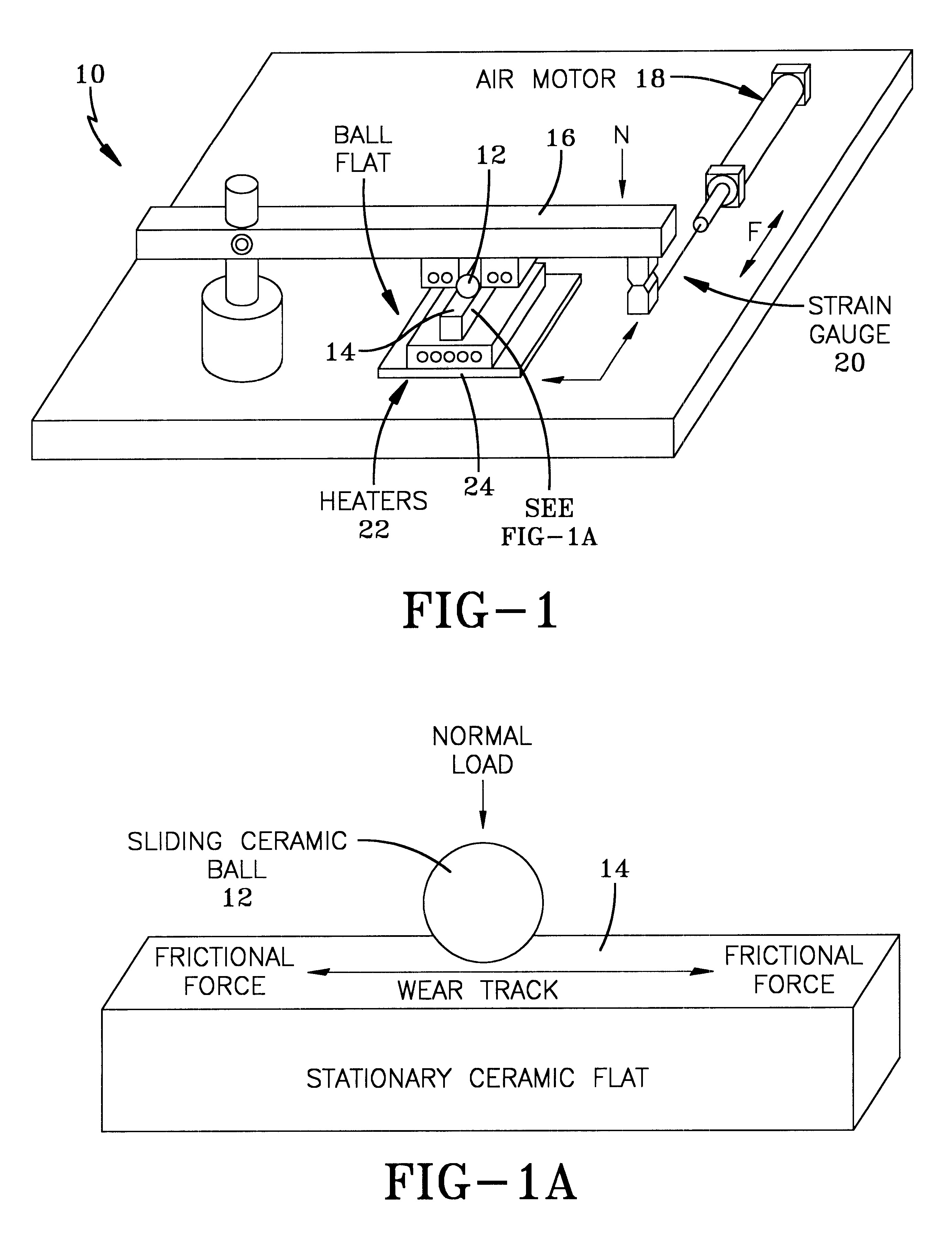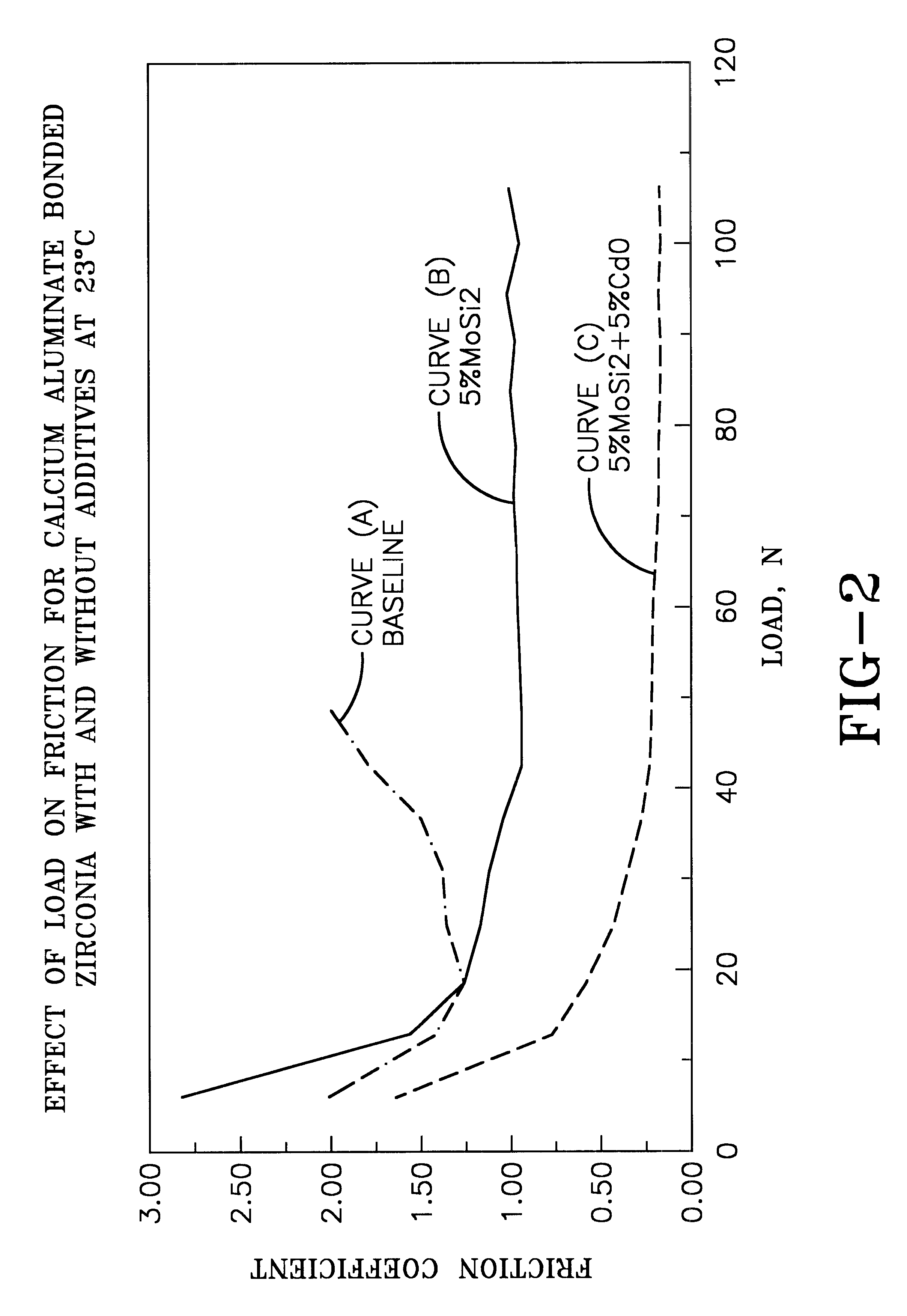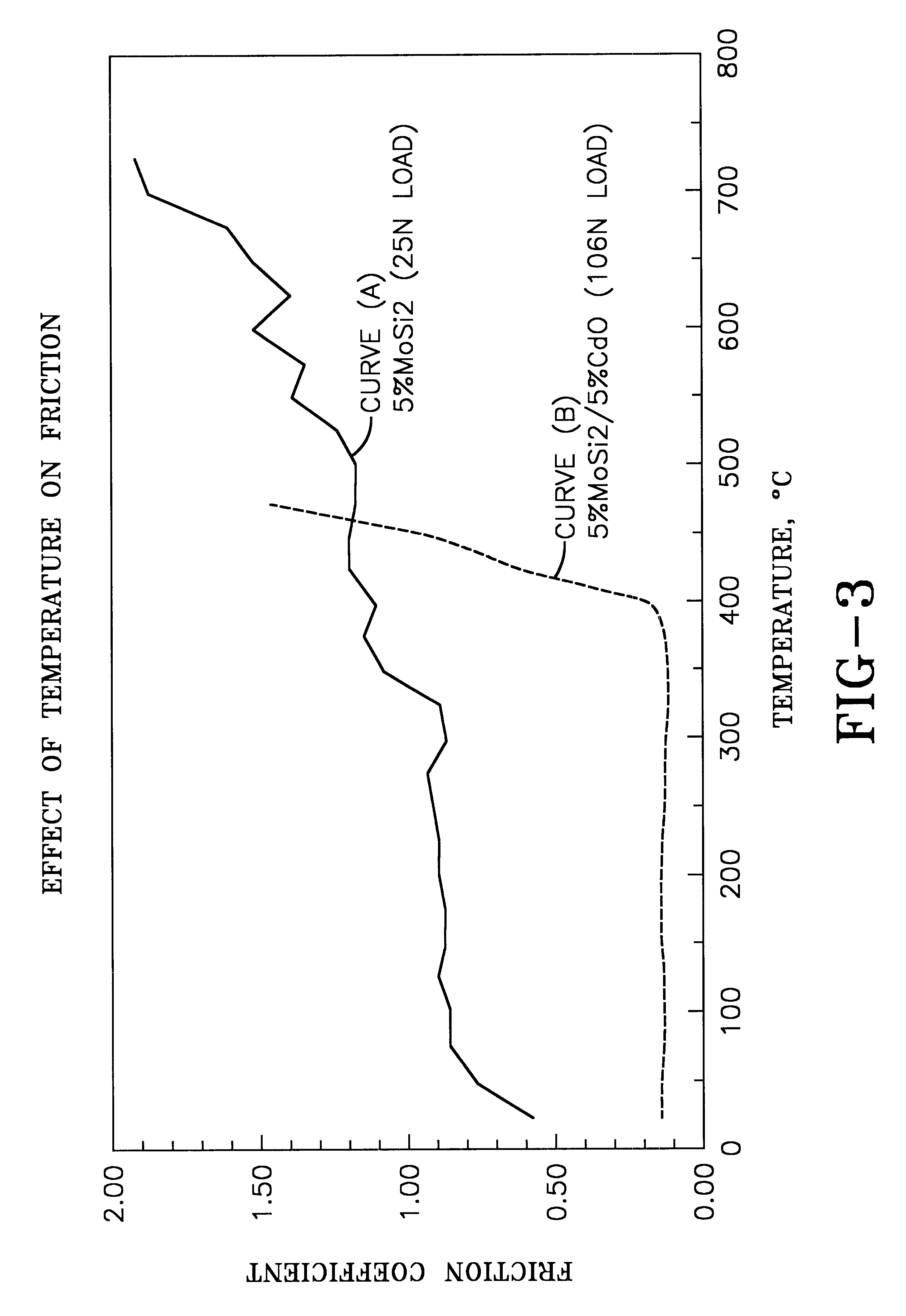Self-lubricating ceramic composites
a self-lubricating, ceramic technology, applied in the direction of engine components, shafts and bearings, machines/engines, etc., can solve the problems of brittle ceramics, prone to cracks, and not very useful for diverse industrial or military applications, so as to reduce processing time, eliminate sophisticated processing technology, and minimize power loss requirements
- Summary
- Abstract
- Description
- Claims
- Application Information
AI Technical Summary
Benefits of technology
Problems solved by technology
Method used
Image
Examples
example 2
Silicon carbide powder and calcium aluminate binder were mixed together with the appropriate amount of additives i.e. metal silicide and metal oxide to increase the strength and lower the coefficient of friction. The mixture was mixed in a roll-mill for 1 hour. To a ten gram portion of the intimately mixed ceramic powder, approximately 2 grams of water was added. The mixture was stirred until a consistent slurry was obtained, and then poured into a high pressure mold. A pressure of 6.9 MPa was applied as the mold was heated to about 150.degree. C. After 2 hours the specimen was released from the mold. This procedure and chemical system produced a ceramic structure with self-lubricating properties.
example 3
Silicon nitride ceramic powder and calcium aluminate binder were mixed together with the appropriate amount of additives i.e. metal silicide and metal oxide to increase the strength and lower the coefficient of friction. The mixture was mixed in a roll-mill for 1 hour. To a ten gram portion of the intimately mixed ceramic powder, approximately 2 grams of water was added. The mixture was stirred until a consistent slurry was obtained, and then poured into a high pressure mold. A pressure of about 6.9 MPa was applied as the mold was heated to about 150.degree. C. After 2 hours the specimen was released from the mold. This procedure and chemical system produced a ceramic structure with self-lubricating properties.
example 4
Alumina ceramic powder and calcium aluminate binder were mixed together with the appropriate amount of additives to increase the strength and lower the coefficient of friction. The mixture was mixed in a roll-mill for 1 hour. To a ten gram portion of the intimately mixed ceramic powder, approximately 2 grams of was added. The mixture, was stirred until a consistent slurry was obtained, and then poured into a high pressure mold. A pressure of 6.9 MPa was applied as the mold was heated to 150.degree. C. After 2 hours the specimen was released from the mold. This procedure and chemical system produced a ceramic structure with self-lubricating properties.
PUM
| Property | Measurement | Unit |
|---|---|---|
| particle size | aaaaa | aaaaa |
| hot-hardness temperatures | aaaaa | aaaaa |
| hot-hardness temperatures | aaaaa | aaaaa |
Abstract
Description
Claims
Application Information
 Login to View More
Login to View More - R&D
- Intellectual Property
- Life Sciences
- Materials
- Tech Scout
- Unparalleled Data Quality
- Higher Quality Content
- 60% Fewer Hallucinations
Browse by: Latest US Patents, China's latest patents, Technical Efficacy Thesaurus, Application Domain, Technology Topic, Popular Technical Reports.
© 2025 PatSnap. All rights reserved.Legal|Privacy policy|Modern Slavery Act Transparency Statement|Sitemap|About US| Contact US: help@patsnap.com



